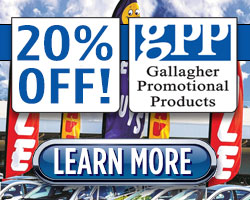This is a great time in the auto industry for dealers looking to capitalize on technologies that drive leads and grow sales from third-party automotive websites. Consumers have evolved and continue to command more and more seamless and transparent digital engagement with dealers, forcing companies and dealerships to evolve as well.
One such emergence over the years as dealership websites continue to improve in their ability to engage visitors, is the importance of driving quality website traffic. There are numerous tools and products available for dealers to generate specific types of website traffic, and the discerning dealer has much to consider when implementing tactics and techniques to attract shoppers online from third-party automotive sites.
Acquiring Shoppers from Third-Party Automotive Sites
When a shopper searches the web for vehicles, they initiate an experience that for most is bewildering. Studies and tests have shown that the average consumer does not intimately know or grasp the nuances of finding the best vehicle to meet their needs, and when they begin searching for answers, there is an abundance of information now available.
The web is littered with thousands of websites designed to take advantage of this by acquiring visitors through search and paid media and then monetizing this traffic through advertising, capture forms, and now by referring these visitors to paying dealers.
The problem for dealers, however, is that while they are paying to acquire these website visitors, qualifying this traffic and vetting it out to determine the true value of these website visitors is difficult. Practically speaking, dealers are relying on their websites to do the vetting. Because of this, it’s imperative for dealers to take the time to know more about the sites sending them traffic. In order for acquired paid traffic to achieve a meaningful ROI, dealers must partner with qualified auto publisher sites, or sites within qualified publisher networks that have proven track records of delivering low-funnel and high converting traffic.
Pay-per-click ad technology that engages consumers at automotive websites with highly relevant offers based on the specific makes and models they are researching, and their geographical location, are more likely to send low-funnel, high converting consumers to your website. Additional low-funnel in-market consumer traffic to your website each month means increased sales opportunities.
Customizing the Shopper’s Third-Party Site Experience
Even though millions of serious car buyers visit automotive websites every month, many don’t become leads or click through to dealer sites because they haven’t completed the research phase yet, not because they’re not ready to buy a car. To fully engage consumers and turn shoppers into buyers, be sure your offers cater to their vehicles of interest, and to a person’s market area. Also take advantage of custom solutions that allow you to use your own images, logos, ad copy, vanity URLs and destination URLs. Tactics like this help avoid significant bounce rates on your website.
Offer a Variety of Vehicles and Choices, Not Just a VDP
A common misconception about online shoppers when they click on a vehicle ad on a third-party site is that they only want to see that particular vehicle. We know this isn’t true about web leads. Just because a shopper submits a web lead on a particular vehicle doesn’t mean that’s all they are interested in. This is why when we design the sales process we are sure to offer the customer several options and choices of the same vehicle and similar ones as well.
When we acquire shoppers from third-party sites we want to direct their attention to a range of vehicles in your inventory, versus only the white sedan to which the ad directed them. Directing car buyers to areas of your website such as a Vehicle Search Results page, to give consumers more options by offering a broader range of models, or a look at additional inventory, ultimately leads to a better buying experience.
Engaging Shoppers on Your Website – Audio/Video Chat and Text
Engaging with customers on your website, your virtual showroom, is a tremendous challenge. Technology that enables you to see exactly what customers are doing on your website as they navigate from car to car and from page to page in real-time is of growing importance.
So too is technology that enables you to communicate one-on-one, in real time with your customers, in the manner they prefer (chat, text, audio, or video) while they are on your website be it from a tablet device, a smartphone, or on a desktop computer. By engaging with website visitors in real-time to help guide them through the sales process and your inventory much like you would if they were in your showroom, you enhance the buying experience by building trust and rapport.








Current Discussion Topics